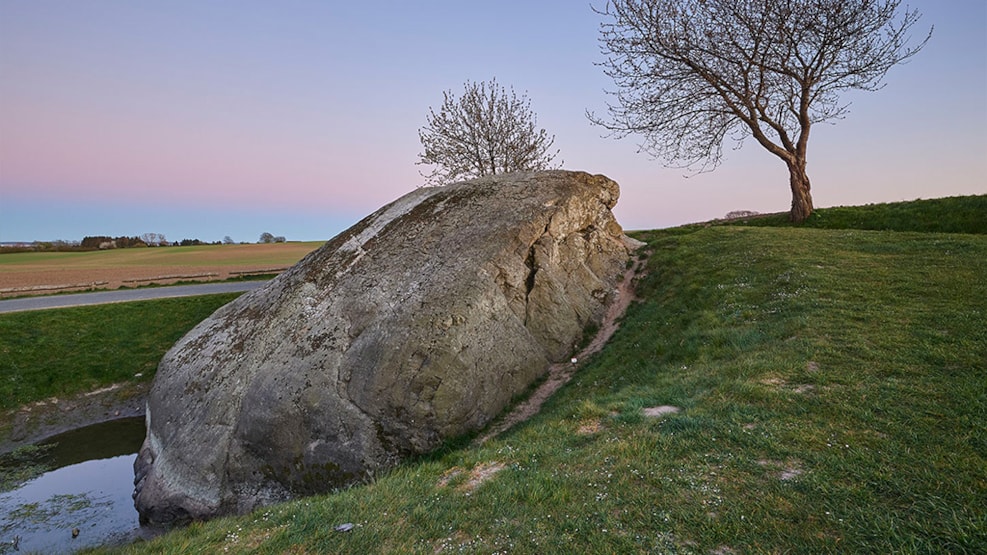
Geopark: Damestenen (The Lady Stone)
Damestenen (The Lady Stone) is Denmarks largest glacial erratic boulder
There's something special about stones that let us touch the past with their indestructibility. Imagine if stones could talk. In that case, there is a stone in the geopark that would be particularly interesting to hear stories from.
Damestenen is Denmark's largest stone on land and is located near Hesselager, as it has been for around 18,000 years! The stone was once part of the bedrock in what we now call Sweden, but during the last ice age, the ice sheet broke it off and a glacier transported the giant stone from Sweden to Denmark. During transport, it is scoured and rounded. At Hesselager, the giant stone hits the ground and freezes solid. Large amounts of ice continue across it, and other frozen stones, sand and gravel smooth the southeast-facing side, leaving the scour marks that show us that the ice moved from southeast to northwest.
The stone is approximately 45 metres in circumference and weighs around 1,000 tonnes - more than twice as heavy as Denmark's second largest stone, the Mørup Stone in Jutland. It consists mainly of light, reddish grey granite with a few narrow veins of the dark grey volcanic rock basalt (diabase). The striking size of the stone has attracted a lot of attention over the years. The Dam Stone was studied by Johan Georg Forchhammer (1794-1865) - the father of Danish geology. In his protocols from 1840, the size of the stone is described, and shortly afterwards, the northeastern side of the Dam Stone was excavated by order of King Christian the Eighth. Ostensibly to investigate whether the colossus was solid bedrock or a loose but unusually large block.
There is public access to the impressive stone and a car park nearby. There are benches and the area is a great place for a rest or lunch in the open air.